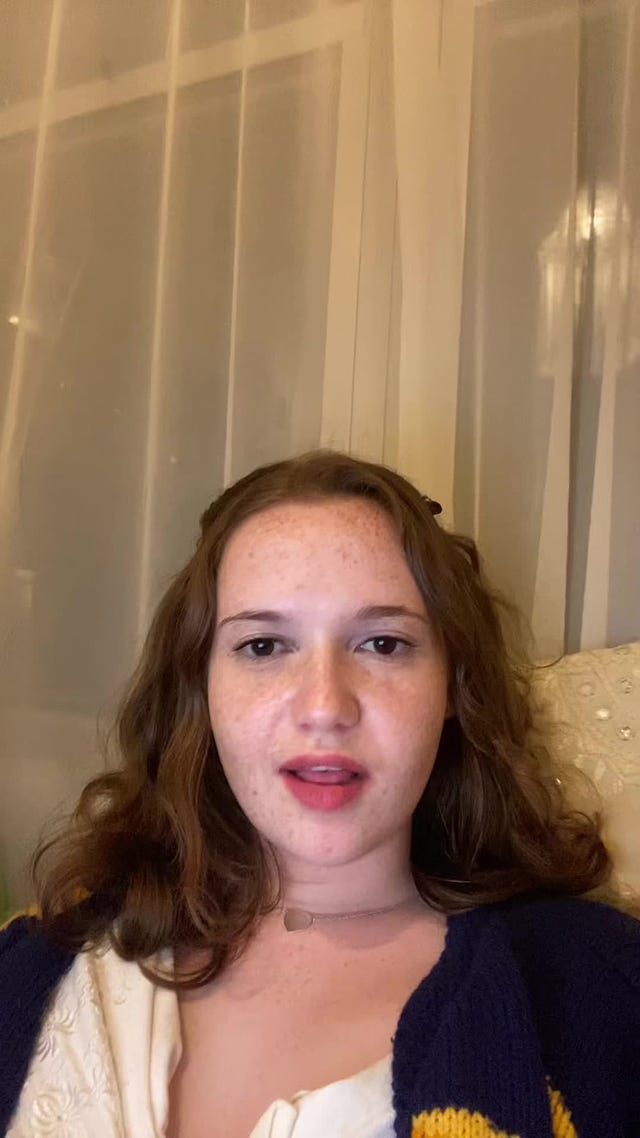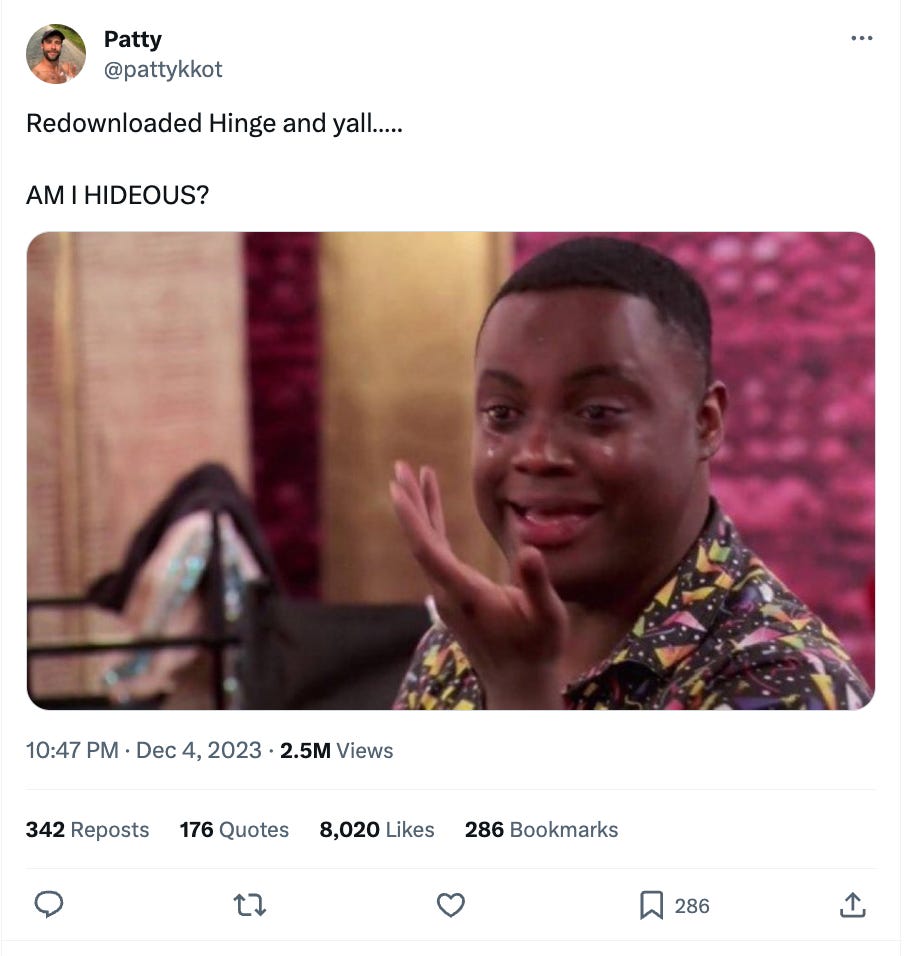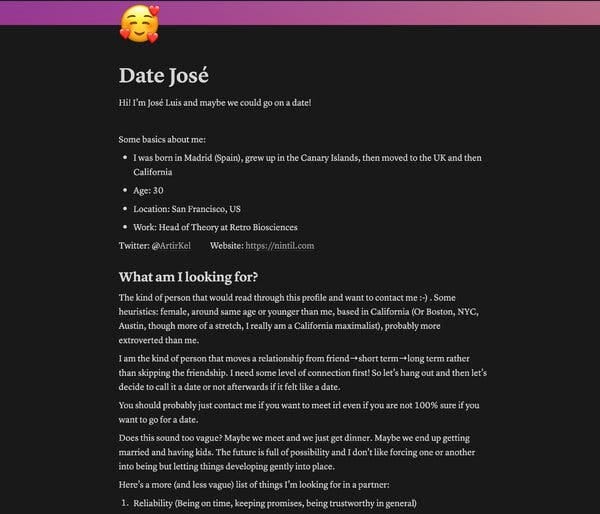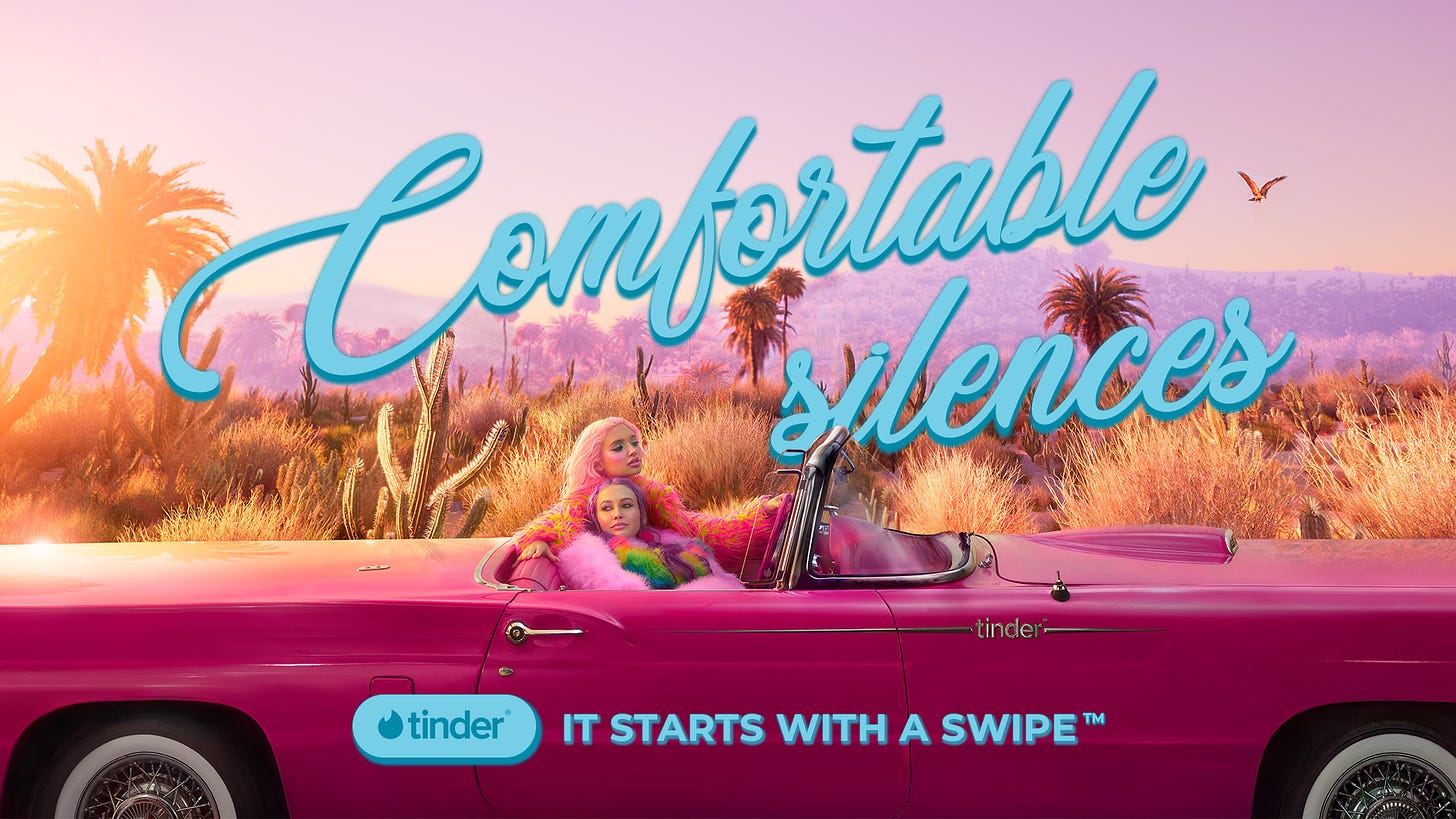Issue #7: Tinder Isn't So Hot Anymore
Why Gen Z is leaving the apps, and what brands should do about it.
Hi and welcome back to Brand Baby. I realized earlier this week that I have written about sports or sports-adjacent marketing campaigns for the last three weeks, so I decided to switch it up a bit with this week’s issue. I’ve been seeing so many recent headlines about the demise of the dating app, so today, we’re talking about what’s going wrong and if there’s any hope of a comeback for these brands in sight.
A quick note before we begin: I want to make note of the recent content moderation issues on the Substack platform. I’m highly disappointed in the lack of action taken to address the growing networks of alt-right and antisemitic blogs on this platform. I’m currently exploring other options for Brand Baby, and I hope you’ll follow me if/when we make the jump. More updates to follow.
TLDR:
Expectations of efficiency, monetization efforts, and concerns around safety have all led to Gen Z’s recent disillusionment with dating apps.
As a result, Gen Z has turned to alternative dating routes, like ‘Date Me’ docs and even asking people out IRL (!).
Dating platforms have already begun investing in live experiences and strategic brand partnerships in an effort to attract and retain Gen Z audiences, but they still have some work to do to create less digitized and more meaningful experiences for users.
For a while, dating apps flourished, with more and more emerging each year to meet the needs of different dating pools; Bumble became the go-to for women who wanted to take the lead and message first, Hinge became the option for anyone looking for a serious relationship, Raya and The League were exclusive and required admission, Lex and Feeld targeted LGBTQIA+ audiences and polyamorists, all while Tinder, once at the forefront of the industry, was relegated to the ‘hook-up app.’ The market became saturated with apps to address each and every one of your dating desires. And for a while, that was good. It worked. Lots of millennials met their life-long partners on these apps, and others had fun swiping and going on dates and hooking up for a while.
But as Gen Z has entered the dating scene, there’s been a shift; sentiments of distrust and disillusionment have replaced the once fun, exciting, novel attitude towards the apps. Now that the older members of Gen Z have spent a substantial amount of time ‘putting themselves out there,’ they’ve become well-acquainted with the challenges that come with dating apps, and they’re looking towards different and better options.
After a bit of research, I’ve boiled the main issues of dating apps down to the following themes:
Promises of efficiency
Pressures to monetize, resulting in a limited user pool
Lack of safety
Let’s begin with the first problem: promises of efficiency. Dating apps sell a promise of love as a formula: upload some photos, swipe, match, message, go out, start dating, fall in love… etc. But love is not formulaic, nor predictable, nor simple. When dating apps promote their experiences as such, users come to expect that things will just fall into place. The reality of romantic experience becomes flattened to a game on your phone – one where you attempt to swipe as much as possible until you find ‘the one.’ This narrative of ease and efficiency is also promoted by the fact that there are so many users on the apps, leading us to believe that of course we’ll find someone on there. But often, we don’t. Which leads us to the next problem… the trouble with the dating pool.
 Tiktok failed to load.
Tiktok failed to load.Enable 3rd party cookies or use another browser
(To anyone reading this who is on a dating app, you’re perfect and I love you. We’re not talking about you, don’t worry.)
I actually think that the issues with the dating pool could be attributed to the monetization of these platforms. While unconfirmed, I read quite a bit about dating apps hiding the ‘best’ people behind paywalls in my research. Take Hinge, which classifies some users as ‘Standouts,’ the select profiles who receive a lot of engagement. Hinge only allows you to interact with Standouts if you send them a rose, but roses cost money ($3.99 each). Of course, who’s to say if the Standouts are actually the best people on the app, but a lot of users get frustrated that they’re being barred from potential connections with popular profiles. As I mentioned earlier, the dating app market has become saturated over the years, so it’s no shock that most dating apps have started introducing various pricing options and add-ons in order to stay afloat. However, many users experience frustration when they realize that dating apps could be gating their one true love behind a paywall. There just seems to be something intrinsically wrong about having to pay for the $12/mo unlimited plan to meet your soulmate!
Then of course, there’s safety. For some apps, the issue of safety is worse than others. Take Feeld, for instance, which, in a recent update, revealed users’ specific neighborhoods instead of how many miles away they were. It goes without saying that when millions of people are on an app for dating/hooking up, there are going to be some weird things that go down. For Gen Z, the ability to meet someone through an established connection, or even social media, tends to bring a lot more solace than going out with someone from an app.
So with these problems in mind, what is Gen Z looking for instead? We’ve started finding alternative routes to connection, like ‘Date Me’ Docs, which are basically dating resumés shared on social media in an attempt to provide a more truthful, holistic representation of self beyond a couple of photos and a voice memo on Hinge. Plus, by sharing these docs within your own social network or among your own friends, you’re able to assert much more control over who views them. Younger generations are also shooting their shots in traditional, old-fashioned ways, like approaching people in public or asking their friends to set them up. And while not quite as traditional, daters are making connections on social media and through the tried-and-true tactic of slidin’ into the good old DMs.
Dating apps have noticed these shifting sentiments among younger generations and have made some preliminary brand-building moves to address them. Tinder is trying to distance itself from the ‘hook-up app’ narrative and position itself as a platform for romantic connection and love. They recently came out with the ‘It Starts With a Swipe’ ad campaign that I’ve been seeing everywhere on the subway. There’s an emphasis on relationship fluidity and LGBTQIA+ relationships in the creative, which might serve as a way to target Gen Z audiences. Tinder has also been focusing on IRL experiences and events, like their Single Summer Series last summer, where they partnered with Chaotic Singles Party, a monthly independent event series where you’re encouraged to bring someone who you’ve matched with on an app. And Bumble puts on Bumble IRL, a series of events to encourage IRL meet-ups in cities across the U.S. There might be some hope in these live activations that bring audiences slightly closer to pre-app dating practices.
I also think that platforms would find greater success in creating opportunities for deeper and more wholesome connections within the app. Maybe that entails a feature where you can upload your own ‘Date Me’ doc, or you provide access to your social channels and the app matches you with distant members of your network (idk, that sounds scary). However, if the dating app exodus continues, then these platforms may have to enact a major product shift to meet the appetite for non-digital, IRL dating experiences.
Other brands could use these Gen Z sentiments and dating trends to their advantage. Take Strava, for instance. A pretty popular app among my friends right now, Strava could create IRL experiences for people to meet up and work out together. Maybe they position it as an event for singles, or maybe they don’t, but either way, it’s an opportunity to serve real-life, fun, low-pressure social connection to Gen Z.
And one last thing – I do also think that there’s a bit of a perception shift that still needs to occur for us, the consumers and daters, towards understanding that the vision that these apps are selling us – a vision of a highly efficient, optimized way of dating – just isn’t realistic. We can still choose to engage with the platforms, but maybe we have to let go of the hope that our romantic pursuits can be solved in just a few swipes on our phones (as much as we would like them to).
Have a great rest of your week.









The creative for Tinder's latest campaign is top notch. I genuinely love the direction they took the campaign in - it's diverse, engaging, inclusive, and just fun to look at! However, I'm interested in seeing if this campaign has actually changed public sentiment and the user experience - even I still just see it as the "app for hook ups." If the branding is great and the product is shit, then nothing will really change.... however Tinder has made major changes to its interface/user experience (in some ways like Hinge). Will be interesting to see how well people adapt to them.
You’re perfect and I love you!